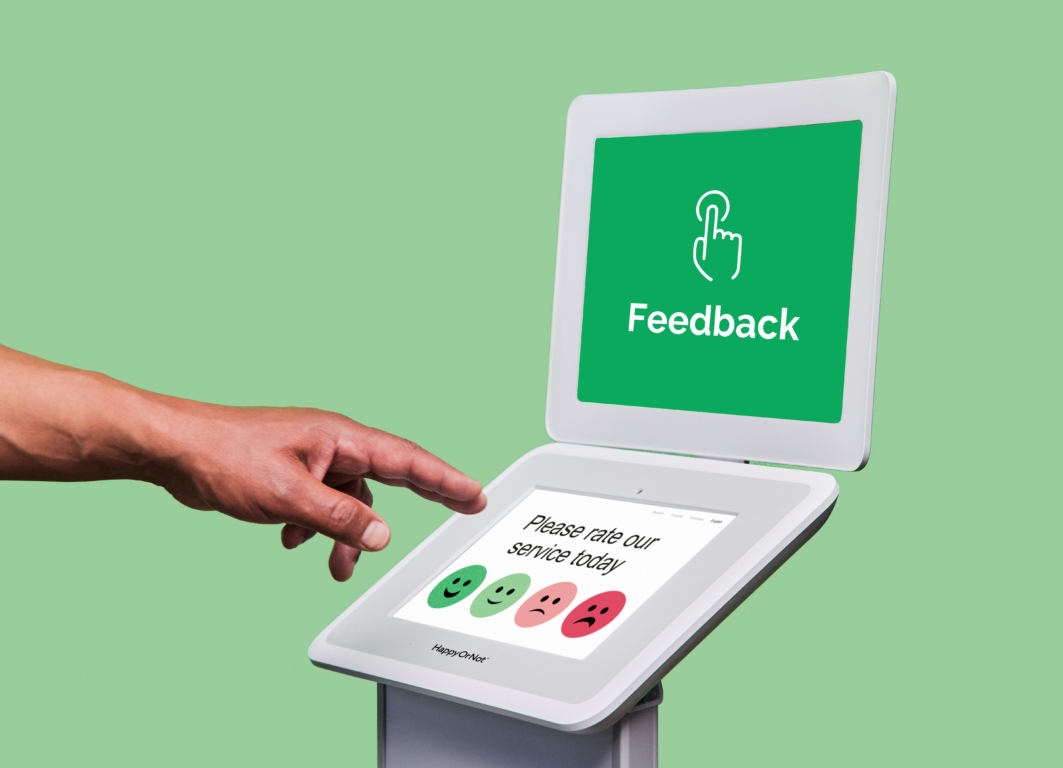

Customer feedback management promotes continuous improvement
No matter what, there is one thing you always need for improving your customers’ experience, whether online or offline: customer feedback.
Collecting customer feedback is one thing, but making sense of it all is an entirely different challenge and, unfortunately, the stage where many businesses go wrong. Even if you succeed in collecting and analyzing customer feedback while making changes accordingly, you must also monitor changes in customer sentiments over time.
To succeed without unnecessary hassle, consider investing in customer feedback management, or CFM for short.

Collecting customer feedback to drive meaningful change
Are your customers satisfied, or is there room for improvement? And if your customers are unhappy, do you know what point of the customer journey is causing their dissatisfaction? Customer feedback management helps answer these questions, respond to your customers’ needs, and more.
Customer feedback management is most valuable to your business when you can collect data about consumer sentiments in the moment while the experience is still fresh in mind. And because a customer’s journey encompasses different stages, you should not limit collecting customer feedback to a single touchpoint.
To succeed in this, giving feedback should be as simple and intuitive as possible, or your customers might not bother to share their thoughts. HappyOrNot’s smiley terminals encourage your customers to share their feedback by eliminating all the unnecessary friction from the process.
Your customers can give feedback with a single press of a button with the Smiley Terminal™ or express their thoughts through open comments using the Smiley Touch™. For websites and email, you can embed Smiley Digital™ to collect customer feedback online.

Use Analytics to improve customer satisfaction
Once you have collected valuable customer feedback, it is time to start making improvements based on it. To pinpoint areas for improvement and monitor the long-term impact of changes, you need intuitive analytics and reporting tools to make sense of the data.
HappyOrNot’s analytics software is always part of the complete solution package. Here is how HappyOrNot Analytics empowers your business to make meaningful improvements and facilitates your growth:
- Compare: Get insights into how customer sentiments fluctuate throughout each day, week, and month. When implementing new improvements based on customer feedback, Analytics removes the guesswork on whether your customers are happier as a result or not.
- Analyze: Recognizing customer dissatisfaction is only the first step; it’s equally important to uncover the root cause of negative feedback. Identify both successful aspects of the customer experience and pain points that require improvement to make targeted changes accordingly.
- Learn: Knowing your customers is essential for delivering world-class service. Dive deeper into your target audience and different demographics to cater to their specific needs and preferences.
- Share: Use insights based on customer feedback to steer your team in the right direction and achieve significant improvements in customer satisfaction, ultimately impacting the bottom line positively.

The role of CFM in the customer feedback loop
Understanding the customer feedback loop is essential for making meaningful improvements to address your customers’ needs and points of dissatisfaction throughout their customer journey.
The customer feedback loop is a continuous process where a business collects customer feedback, makes improvements based on that feedback, and follows up to ensure that customers’ voices have been heard. Therefore, it is an essential component of your business’s continuous improvement efforts.
This continuous feedback loop helps you build stronger customer relationships while increasing customer loyalty and driving business growth.
Although the customer feedback loop is always ongoing, striving for continuous improvement in customer satisfaction, it can be divided into the following stages:
- Collecting customer feedback: Feedback collection should occur through various channels and at multiple points to identify the stages of the customer journey that require attention.
- Analyzing customer feedback: Simply collecting feedback is not sufficient; you must also interpret the data to identify trends, patterns, and areas for improvement. The easier the data is to visualize, the more actionable it becomes. Graphs, numerical ratings, and trendlines turn masses of data into insights you can act upon.
- Implementing changes: Share your feedback-based findings with all necessary stakeholders involved in making appropriate changes. This could include frontline staff interacting directly with customers or managers responsible for ensuring a positive customer experience.
- Closing the loop: Show your customers that you have listened to them and that their feedback matters to you. Closing the customer feedback loop demonstrates to customers that their input is valued. While it might seem like an optional step after implementing changes, it’s actually more critical to customer satisfaction than you might realize.

Manage the feedback loop seamlessly
Customer feedback management plays a pivotal role in this process by facilitating the collection, analysis, and management of customer feedback through appropriate tools and technology. HappyOrNot streamlines customer feedback management, simplifying the process. With tools for collecting customer feedback and transforming feedback data into comprehensible analytics, you can effectively manage the feedback loop and respond to trends in consumer behavior and shifts in customer sentiments.